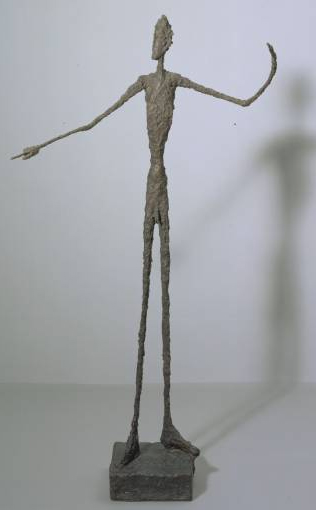'Paris post-War', sponsored by The Independent, opens on Wednesday. Andrew Graham-Dixon argues that existentialism is not so much a philosophy of life as a school of art
The Bible of existentialism, Jean-Paul Sartre's Being and Nothingness, was published in occupied Paris in 1943 as a fat, fat paperback in an edition of 2,000. No one reviewed it, and hardly anyone seems to have read it. The pattern was set: Being and Nothingness would become possibly the most influential unnoticed and unread book of the 20th century. Even now it seems unlikely that many people have read its 650 or so pages from start to finish (not counting professional philosophers). This is not surprising, given the fantastic opacity of the prose in which it was written.
Here is Sartre, in Being and Nothingness, on the subject of ''temporality'': ''A For-itself which has squeezed out all its nothingness and been reapprehended by the In-itself, a For-itself dissolving into the world - such is the Past which I have to be, such is the avatar of the For-itself. But this avatar is produced in unity with the appearance of a For-itself which nihilates itself as Presence to the world and which has to be the Past which it transcends. What is the meaning of this upsurge?'' What, indeed?
All this might make ''Paris Post-War: Art and Existentialism 1945-55'', at the Tate Gallery, seem a somewhat perverse exercise: an attempt to establish the links between a philosophy that no one has ever fully understood and an art whose precise meanings have never been agreed; an absurd effort to define the culture of the Absurd.
But what the show demonstrates, with some conviction, is that the best way to understand existentialism is, indeed, through the work of the artists - most notably,...

Something out of nothing
08-06-1993

